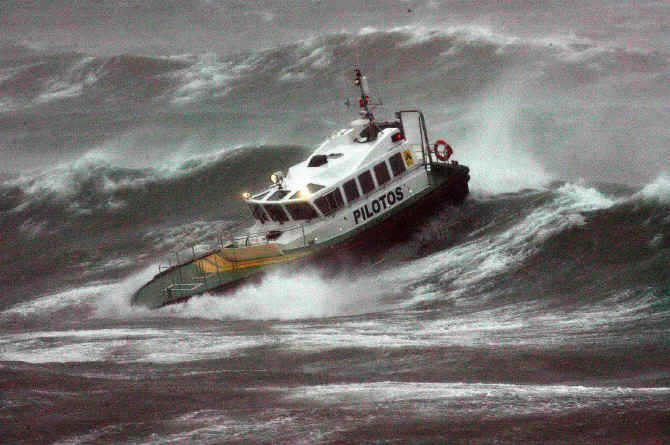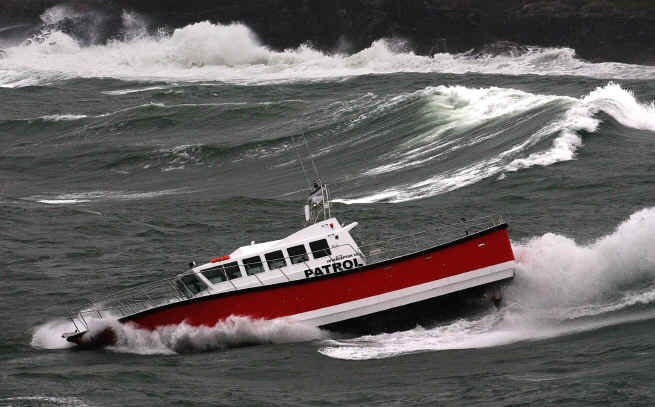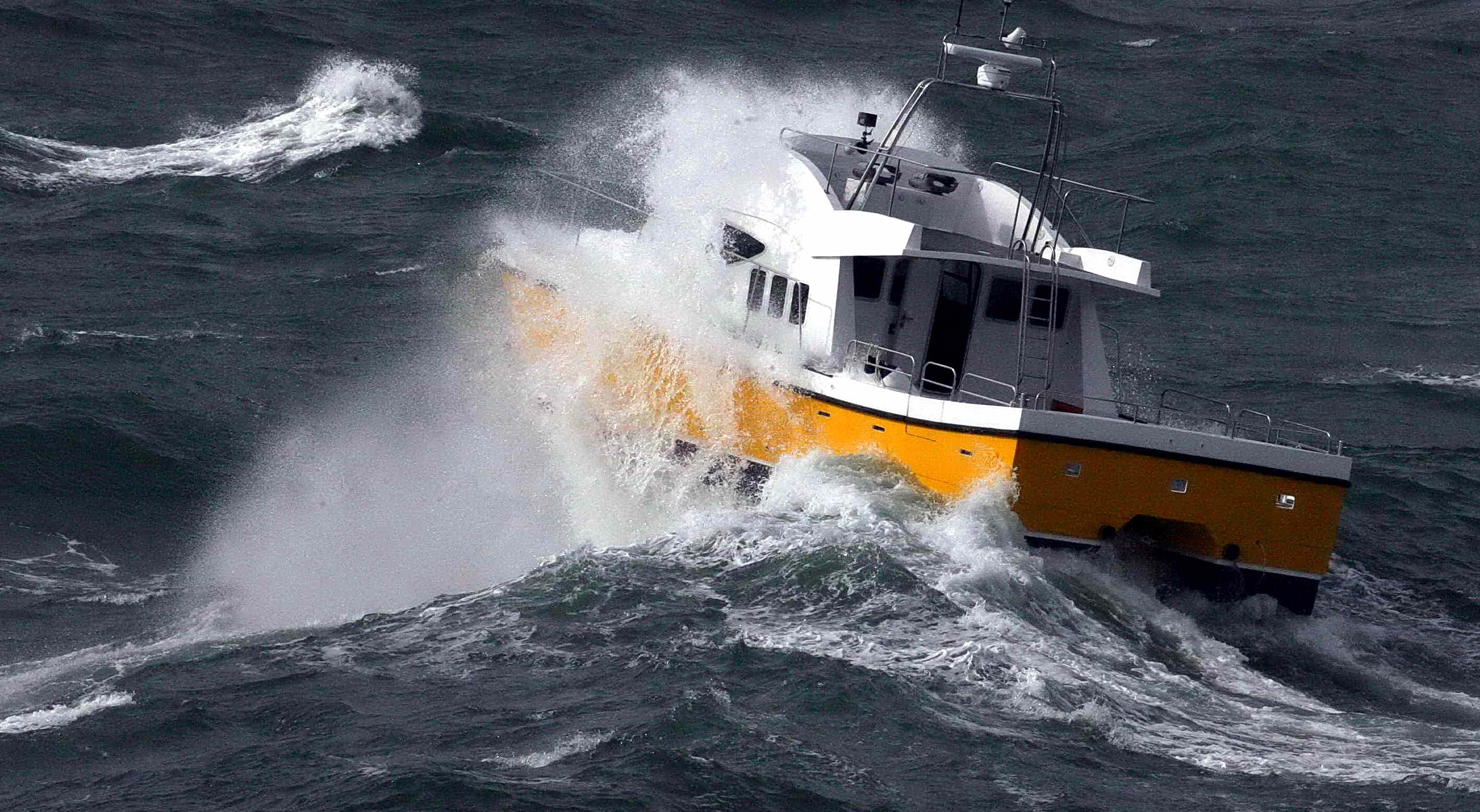|
|
||
|
Force
9 winds and waves reaching a height of 25 to
The Safehaven hulls come
in two types, catamarans and monohulls.
The monohulls have a unique design that has been developed from
long experience with rough seas. It
is unlikely that any boat anywhere in the world has undergone such
serious testing and the result is a finely tuned hull design that can
cope with the worse that the sea can offer.
The hull is basically a deep vee with a deadrise of 18o
at the transom. A unique
feature of the design is the double chine arrangement, with a
secondary chine in the topsides above the main chine that helps to
keep down the spray and which generates additional lift in rough
conditions. The hull has a
find entry to cope with head sea conditions and there is a single
spray rail on the lower hull that extends well aft. The bow is steeply raked
to help soften the entry into waves and the chine has a distinct
curve, falling away from the bow and then leveling off for the run
aft. Unusually for a vee
hull there is a skeg keel that extends well aft and this is deep
enough to offer protection for the propellers that operate in shallow
semi-tunnels let into the hull at the stern.
Apart from the double
chine and the skeg, this hull description does not differ a lot from
the specification found on many leisure craft, but the key to this
design is the way the hull shape has been carefully balanced so that
it will perform equally well in all sea conditions. Safehaven Marine does not aim for high
performance with their designs and the Frank Kowalski, the owner of Safehaven Marine, moved into building boats to his own designs after time spent fitting out standard hulls for commercial and serious leisure use. He designs from experience and must be one of the very few designers who not only goes to sea to test his designs but actively seeks out the worst conditions to see how they perform. My sea trial was on a new 55-footer that has been built as a pilot boat for Sines in Portugal, and we only had a force 5 wind with moderate seas. |
Kowalski waits until the wind is a force 9 from
the south or the southwest and when the ebb tide is running out of
Cork Harbour – then he heads out to sea.
Not only is there the wind against tide conditions to cope
with, but the shallow water in the centre of the main entrance knocks
up a particularly ferocious breaking sea, waves towering to
The videos taking during
these extreme sea trials show the boats coping well with the extreme
conditions. Even when they
penetrate a heavy breaking wave and ship solid water on deck, the boat
comes out smiling. This is
performance that is rarely seen – or experienced, for that matter
– and it makes you feel that here is a boat that will cope with
everything the sea can throw at it. The balance that Kowalski seeks to building into
his designs is readily apparent from the videos and from the sea
trials. Trying to achieve
a good ratio between the conflicting requirements of head sea and
following sea performance can be a challenge for any designed, but in
the Safehaven hulls Kowalski has hit the spot.
The videos show the boat powering through head seas that tower
above the boat in a breaking crest and coming out the other side with
the water draining away from the deck, the boat still powering
forward. Out on our sea trial we only had a force 5 wind
combining with a swell rolling in from the west.
Out clear of Kinsale Head the sea conditions were lively but we
did not ship a drop of water and there was very little pitching
despite the fact that we were traveling at over 25 knots.
This lack of pitching is probably a compliment to the setting
of the interceptors fitted at the transom.
These are made to Kowalski’s own design and they work
extremely efficiently. The
directional stability was also excellent and yet, when you needed to
turn the wheel, the response was quick and eager – just what you
need to position yourself in rough seas. The catamaran designs developed by Safehaven are mainly aimed at the sea angling market where large cockpit space is beneficial. These catamarans go through the same tough testing regime to ensure that they will stand up to hard use in real life. On all of the leisure designs the interiors can be fitted out to individual requirements with standards ranging up to those found on luxury yachts.
Safehaven Marine has supplied pilot boats based
on their 42 and Down below, this pilot
boat version was fitted out with two cabins plus a bathroom and a
galley, but there is space here for comfortable cruising
accommodation. A leisure
boat build on one of these remarkable hulls would have the capability
to make long distance cruises without the fear that the weather might
turn against you. Here is
the perfect cruising boat for the serious RIB owner who undertakes
cruising but now wants a but more comfort and weather protection.
|
|




